#Southern British Railways
Explore tagged Tumblr posts
Photo

‘Winter Sports - go by train’
Southern British Railways travel poster (c. 1960). Artwork by John Cort.
#vintage poster#vintage travel poster#1960s#John Cort#Southern British Railways#british#winter sports#skiing#train#railway#travel#tourism#sport#winter#ski pole#skier
93 notes
·
View notes
Text









Gloucestershire and Warwickshire Railway, May 2024 (Part 2)
#steam locomotive#england#summer#photography#steam engine#steam train#train#engine#locomotive#british railways#smoke#steam#photograph#GWR#Great Western Railway#southern railway#gloucestershire and Warwickshire railway
60 notes
·
View notes
Text
How Did the Big 4 Affect Ideas About Scrap for the Steam Engines:
Alright, so in the Railway Series, we know that scrap and the idea of scrap is horrifying to the engines. But the real question is: was this a universal thing? Were all the engines equally horrified, or were there differences.
I mean, from that one infamous illustration in the Railway Series, it seems pretty universal...
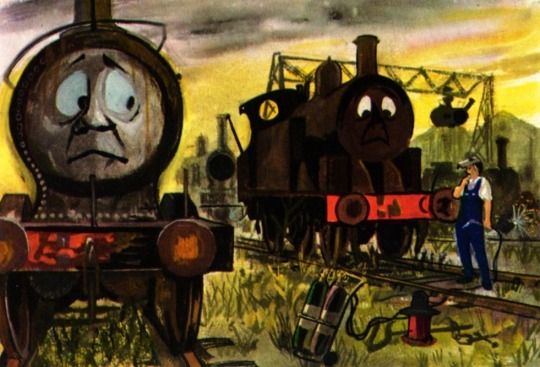
But I think that if we dive a little deeper, there may be a few other factors at play, which collectively create very different views on scrap - and they all have to do with the Big 4. I'm going to explain them by size, so let's start giant and get smaller.
LMS:
The LMS engines would not be as surprised to hear they're being replaced and scrapped as other companies. Why? Well, we have to look back a bit. In the 1920's, the LMS was a bit of a hodgepodge of constituent railways and their engines. The Midland 'small-engine' policy did mean that a lot of the bigger engines were frowned upon, but in general the engines were just... there.

This changed with Stanier. When Stanier came along, he began building larger, faster, more powerful engines - and thus a lot of the older, smaller classes were axed. Engines classes like the Black Fives, Coronations and 8F's could do the work of these older engines much better!

There was only one class of engine built by the Furness that survived into BR ownership, and they weren't the only company with this happening. The engines of the LMS would've been accustomed to these ideas. And where does D261 come from? Well, the Class 40 diesels were used on the West Coast Mainline - D261 would be very used to the steam engines being very accepting of the idea that this was 'their time', and therefore stunned at how the Sodor engines acted.
The opposite end of this was that smaller engine classes were very afraid of being withdrawn. Edward's a great example of this - he watched his entire railway be taken over and all his friends and family replaced - and he fears he might be next. It drives him to extreme lengths to prove his worth, just to try and gain a few more years. Donald and Douglas are another example of this; as Caledonian Railway engines, they were generally under the threat of being scrapped all through their careers, and this created a desire to prove themselves and survive.
The LMS as a company committed to this 'purge' of smaller, older classes, and thus the engines of the LMS would have been far more used to and accepting of the idea of being scrapped as compared to others. It was part of the company culture! It wasn't universal by any means, but it had an impact, especially in the English part of the LMS.
LNER:
The exact opposite of the LMS. The LNER was a railway that was throughout its existence very, very poor. And while it did build some stunning-looking express engines...
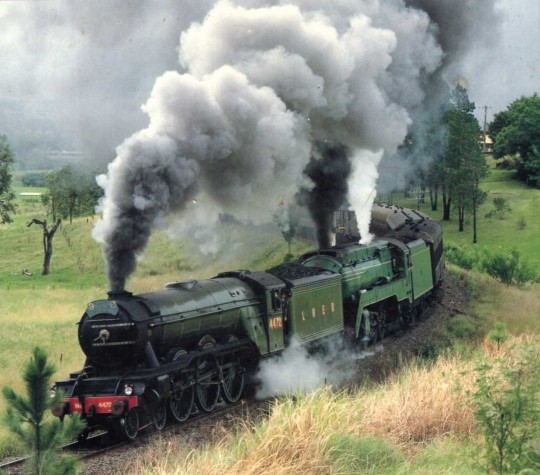
... in actuality, many of the engines running on the LNER were constituent engines that were just kept going. A good example of this would be the C1 Atlantics, which were introduced in 1902, and weren't completely withdrawn until 1950!
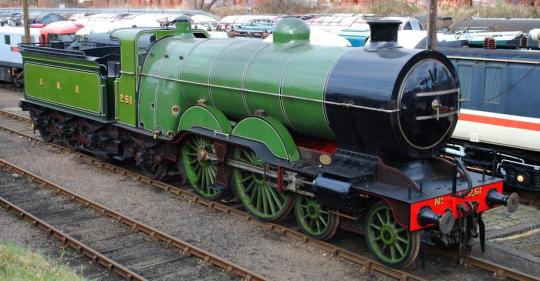
The LNER just didn't have the money or the ability to commit to a drastic newbuild scheme like the LMS did. That isn't to say that old engines weren't scrapped, but it did mean a lot more of the older classes weren't. And when a large body of engines survive for 50 odd years, the culture of elongated existence survives with them. Gordon is so badly affected by the Modernisation Plan personally because his company culture was one of preservation and extended service. His brothers would have quite happily told him that even when they were supplanted by the A4's that they'd be around for a long time yet, because that's how the LNER worked. And then they weren't and Gordon was stunned.
And remember, the LNER is the railway that preserved City of Truro alongside a bunch of its elderly engines at York. This railway had a culture that was built around a sort of trickle-down duties. As express engines were supplanted, they simply moved down the chain.
Speaking of City of Truro...
GWR:
This is another railway whose engines are stunned by the Modernisation Plan, but for a very different reason. Both the GWR and the LMS scrapped a large number of engines in the 1930's, but unlike the LMS, the GWR focused on engines who were at the end of their useful lifespan.
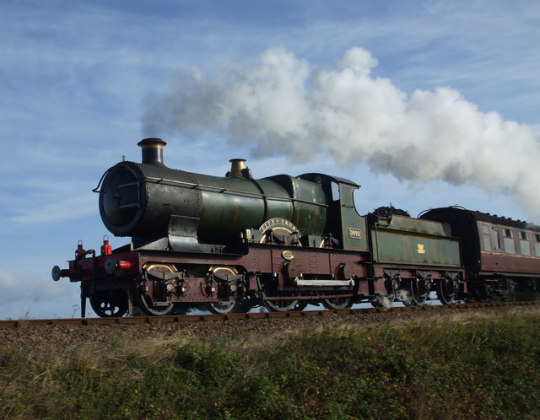
City of Truro was around 30 when withdrawn. For an engine introduced at the same time as the C1 Atlantics, this seems short - but its about average for the GWR at the time. The shock to the GWR engines is not the fact they're being scrapped - it's the fact that engines not at the end of their useful lifespans are being scrapped.
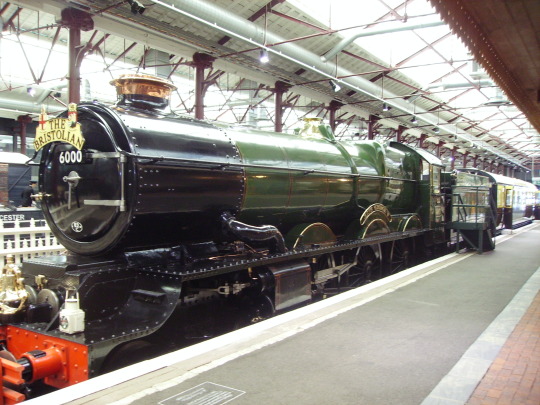
The King class was built in 1927 and nearing the end of their lifespan, but the Modified Halls weren't, and neither were the 9400's. Their withdrawal and subsequent scrapping was what really shocked Western engines.
Oliver's class was built in the 1930's, and would have expected to survive into the late 1960's and 1970's. The sudden withdrawal of them all would have been a great shock, and one of the driving factors behind his escape.
And then in the Railway Series, Duck doesn't act all that surprised to hear steam engines are being cut up - but he is hostile to diesel engines. The reason? Because diesel engines aren't just replacing the old engines in the natural GWR order of things, but supplanting the entire lot. He's relatively fine with Bear though because unlike many of the other diesels, Bear's class could be very easily perceived as being a natural progression of GWR engines. They took over the jobs of Castles and Kings - engines built in the 1920's and nearing the end of their GWR lives. There is of course also his outburst, which gives off a very GWR vibe - telling an engine off for insulting another railway? I wonder which of our Famous Eight has also done that...
Southern:
Right, so the Southern is possibly the most interesting case of them all. And the reason for that is this:
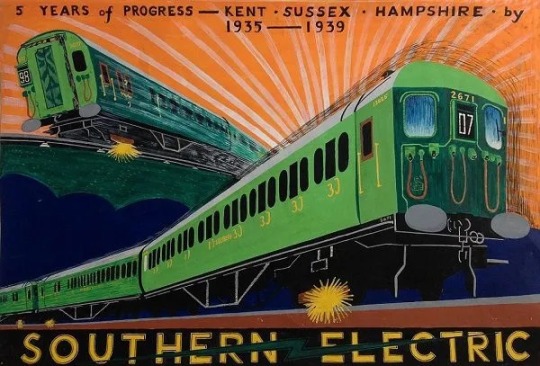
The Southern Railway was both the smallest of the Big 4 and the most passenger orientated. As such, they naturally gravitated towards a program of electrification, which they saw as the best way to maximise their profits. Engines on the Southern would have been invariably told that they would be withdrawn someday when the electrification reached their part of the line. That is a level of certainty that would have a massive impact on how the engines viewed their fate.
It also meant that the Southern Railway was not focused on replacing the steam engines they already had with new ones. This allowed some truly ancient engines to make it to British Railways.
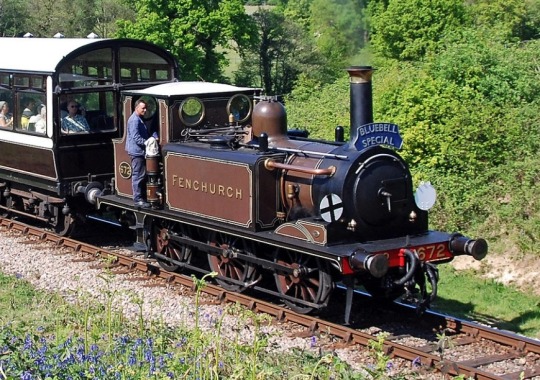
This is Fenchurch, and when withdrawn in 1963 he was the oldest engine working on British Rail. He was built in 1872 - so that's a career of 91 years. And another class that was hitting pensioner years in British Rail was the Adams Radial Class, built in 1882. Both Southern Railway engines that found a niche duty that wasn't going to be electrified or upgraded anytime soon.
Even the E2's had their own niche at Southampton docks! They were a failure of a class when built, and yet were still in service in the 1960's. Thomas the tank engine himself has remarkably little to say about modernisation in the books - his job is threatened by a diesel, and while he's horrified that it's a diesel, he's not shocked he's being replaced. Even though he spent a tiny amount of time in the south, its culture managed to penetrate his smokebox.
But there is one other railway that has a central role in this, and it is of course British Railways.
British Railways:
Right, so this is the one company that is the cause of much of the above commentary to become obsolete. When amalgamated, British Rail was meant to electrify the country's railways slowly and steadily, with steam engines making up the difference. And at the onset, they withdrew and scrapped many of the older, smaller classes of engines and replaced them with the Standards - something very similar to LMS and GWR practice, and also not unfamiliar to the LNER. The really problem comes with the Modernisation Plan in 1955.
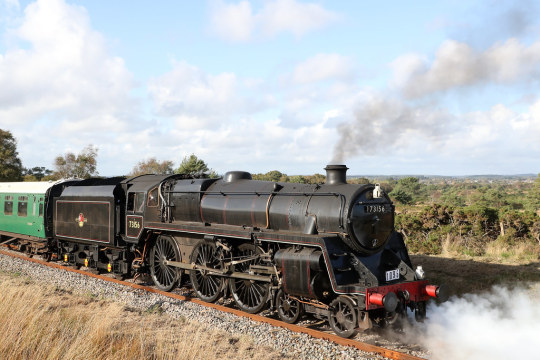
The Standard Five class were built until 1957 - two years after the publication of the Modernisation Plan which explicitly stated that BR would scrap all steam. The 9F's were being built until 1960. At the longest, these engines got less than twenty years. At the youngest, some were withdrawn after only five years.
And that's what shocked all the older engines. It's not the fact they're being scrapped - ever since the conception of the railways, engines have been being scrapped. It's the magnitude of the scrapping and the wanton destruction of young, healthy engines. It's not that they're being replaced - that was always going to happen, all the engines knew that. It's the speed of the Modernisation Plan, the scrapping of brand new engines and the fact that steam engines were replaced with Pilot scheme diesels who were mostly failures.
That's what caused the engines to fear scrap and hate diesels.
And while I would love to delve into the diesels and what happened to them, that's its own massive thing.
I would like to note that this does not really take into account specific incidents, but rather general trends that would have led to more widespread knowledge. The single incident involving one engine in Aberdeen doesn't really permeate railway gossip and ideology, but an entire class being withdrawn does.
I would also like to acknowledge the fact none of the above pictures are mine.
#ttte edward#ttte gordon#ttte donald#ttte douglas#ttte oliver#ttte duck#lner#LMS#gwr#southern railway#british rail#long reads#weirdo shit#I thought I'd share this brainfart#thomas the tank engine#railway series#railways#britain
179 notes
·
View notes
Text

Cheers to @shinygoku for having that photo locked and loaded! Look how cool!! (via twt)
32 notes
·
View notes
Text


introducing the big four. the main troublemakers. berwyn (GWR) is probably the only one who still has this photo.
ask box is now open as well !
#inbetweenthelines#ibttl4#lner#lms#southern railway#gwr#great western railway#london midland scottish railway#london north eastern railway#ttte#the railway series#railway series#personification#gijinka#thomas the tank engine#thomas and friends#railway#british rail#oc art#digital art
42 notes
·
View notes
Text
we've rehired Oliver bulleid because honestly? we're all out of other people willing to take the job.
anyway we're pleased to announce that we're introducing a sequel to the buffet car: the pub car. now you can get sloshed with strangers in style!
#british rail#trains#this is a genuine thing that the southern railway had#they didn't last long cause people would get too drunk and miss their stops
10 notes
·
View notes
Text

This week's Locomotive of the Week is Southern Railway Merchant Navy 4-6-2 No.35029 "Ellerman Lines". 35029 was built in 1949 at Eastleigh and allocated to Dover Marine depot. In 1955, it was reallocated to Nine Elms. It was rebuilt at Eastleigh in 1959 and withdrawn 7 years later in 1966 from Weymouth depot having run less than 800,000 miles in service. The engine was sold to the Woodham Bros' Scrapyard at Barry in Wales. It stayed there until 1974 when the National Railway Museum decided to use it to display the inner workings of a steam locomotive. It was sectioned at Sewstern and had final touches placed on it at Market Overton before being delivered to the NRM's York site, where it remains today as object 1975-7021 in the collection.
4 notes
·
View notes
Photo

Presenting the Great Western Railway's 57xx pannier tank! Duck has appeared before, but was never quite finished, or given a proper release. Now he is here with 8 of his siblings.
#ttte duck#ttte fanart#rws fanart#island of sodor#North Western Railway#NWR#GWR#Great Western Railway#NCB#National Coal Board#GN&SR#Great Northern and Southern Railway#London Transport#BR#57xx#0-6-0PT#pannier tank#British Railways#*sobs*#The youngest one (BR Lined Black- 6779) was less than nine years old irl#*loads headcanon*#not on my watch#she is preserved in my au#fight me
20 notes
·
View notes
Text

Another final farewell as class 313 PEP units 313201 & 313208 glide out of Brighton station, having worked the Branch Line Society charity railtour around their final stomping ground along the South Coast.
Been out chasing not one but three special railtours today, and of course I ran my camera battery to the ground and had to capture this last scene on my phone. At least the upshot is that I was able to edit & share it the same day (well... kind of...) even as the rest of my footage is stuck on my camera.
#class 313#PEP#electric multiple unit#commuter train#railway enthusiast#electric train#Southern#British Rail#Brighton#history
4 notes
·
View notes
Text
Saturday Movie Night: Terminus (1961)
youtube
In this early example of what we would now call fly-on-the-wall filmmaking, the daily rhythms and dramas of a big railway station are captured to perfection, as we are treated to a supposedly typical day in the life of London's Waterloo station. Over the course of 24 hours, the gateway to the south plays host to all manner of human interactions: triumphs and tragedies; grief and joy; losses and reunions; tension and relaxation; and, of course, arrivals and departures
Terminus is one of BTF's best-loved and most successful films, and I make no apologies for admitting it's a personal favourite of mine too.
#british railways#british rail#southern railway#southern region#terminus#1961#british transport films#john schlesinger#waterloo station#london#railway station#steam railways#steam locomotives#real true railway stuff#ttte plot inspiration#Youtube
0 notes
Text
...of Anoraks, Pufferküsser and Tragics!
A short foreword and explanation: My friend Michael in London has been doing a blog since blogs became a thing. He started out to review, comment on and complain about all things Apple. Hence the blog’s URL: www.macfilos.com. However over the years his obsession with photography and cameras, in particular Leica equipment, became the main focus of his blog. The blog name stayed the same, but it is…
#American 4-4-0#Beecham#Black 5#British Heritage Railways#Flying Scotsman#Great Central Railway#Great Western Mainline#GWR#Isambard Kingdom Brunel#Jacobite Steam Train#Leica#LNER#London Midland Scottish#London Victoria Station#National Railway Museum York#New Freedom#Norfolk and Western#North Norfolk Railway#North Yorkshire Moors Railway#O. Winston Link#Roanoke#Seattle and Carlisle Rail Line#Severn Valley Railway#Sherbourne Christmas Express#Southern Railway (US)#Steam Locomotives#Train Spotters#UK Rail Tours#UK Railtours#Virginia
0 notes
Video
youtube
Tavern On The Train Aka Bar On A Train (1949)
Footage of the Southern Region’s tavern cars. These were quite a novel concept; coaches designed to mimic an English pub inside. Apparently, passengers took to the concept eagerly, though stuffy government higher-ups prevented the concept from going further. It’s a pity none of the four tavern cars built survived into preservation. They would be very popular with visitors to preserved railways!
#youtube#trains#southern railway#british railways#Bulleid tavern car#1949#archive footage#british pathé#Imagine riding in one of these!
1 note
·
View note
Text









Gloucestershire and Warwickshire Railway, May 2024 (Part 4)
#steam locomotive#england#summer#photography#steam engine#steam train#train#engine#locomotive#british railways#smoke#steam#photograph#GWR#Great Western Railway#southern railway#gloucestershire and Warwickshire railway
22 notes
·
View notes
Video
BR Steam Loco No. 73022 SCTS railtour @ Wallington - Mar 1965 by Frederick McLean Via Flickr: A photograph of British Railways 4-6-0 locomotive No. 73022 at Wallington railway station on 28 Mar 1965. It is pulling a 7 coach 'Southern Counties Touring Society' "Southern Wanderer Railtour". The photograph reverse is stamped with the photographer (and/or negative owner) name F. C. Hammersley. Locomotive No. 73022 was a 4-6-0 engine, built by Crewe Works and new to British Railways in Oct 1951. It was withdrawn from service in Apr 1967 and in the September was scrapped at 'Cashmore's Great Bridge' scrapyard. Railtour itinerary on the 'Locomotive Performance' site:- locoperformance.tripod.com/edition18/73022scts.htm If there are any errors in the above description please let me know. Thanks. 📷 Any photograph I post on Flickr is an original in my possession, nothing is ever copied/downloaded from another location. 📷 -------------------------------------------------
#British Railways#British Rail#steam engine#steam locomotive#4-6-0#Southern Wanderer Railtour#1960s#F C Hammersley#SCTS#Southern Counties Touring Society#73022#old photograph#old transport#old steam engine#old locomotive#Wallington#station Wallington#railway#station train#tour railtour steam#train railway#station old#Derby Works#transport#transport history#transport photograph#transportphotography#vintage transport#flickr
0 notes
Note
Hey there, did you know that the Bluebell Railway is building a new LBSC H2 Atlantic?
Apparently there's been lots of rail news going around when I've been too busy to look in. That sounds really neat??
#where are they building it#it's not in their own shop is it#real true railway stuff#british engines#new build engines#southern region engines#chatter
13 notes
·
View notes
Text
Ideas and Inspiration :: Jeremy English

View On WordPress
#4mm scale models#978-1-9064-1975-2#bachmann#books by jeremy english#british railways#finescale#gauge track#hornby#modelling handbooks#modelling ideas#modelling manuals#modelling passenger trains#modelling southern railways#modelling techniques#modelling the southern series#modelling trains#n gauge#railway model#scale models#scratch building#toy trains#trackwork modelling
0 notes